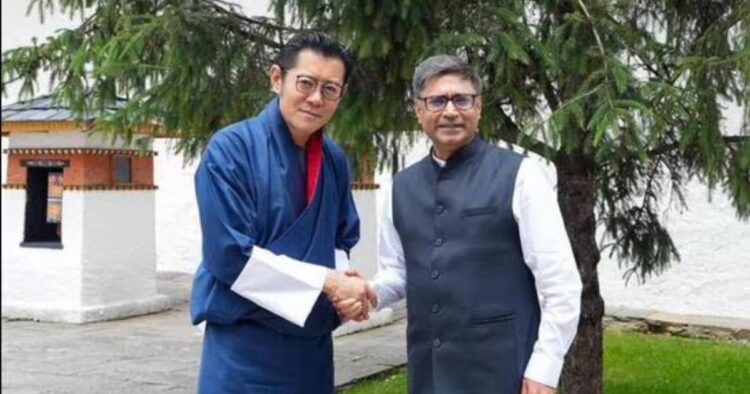In the Indian government’s budget for 2024-25, Bhutan has once again received the largest share of the country’s external aid, with a substantial allocation of Rs 2,068 crore. This amount reflects India’s ongoing commitment to its “Neighborhood First” policy, which prioritizes strengthening ties with neighboring countries. This year, Bhutan’s aid is part of a broader external aid portfolio totaling Rs 4,883.56 crore, which includes both soft loans and grants.
As part of its enhanced support for Bhutan, India has announced plans to double its financial contribution to Bhutan’s five-year plans from Rs 5,000 crore to Rs 10,000 crore. This significant increase highlights the importance India places on its relationship with Bhutan and its efforts to foster regional stability and development.
In addition to Bhutan, the budget also includes notable allocations for other countries. Nepal is set to receive Rs 700 crore, while the Maldives is allocated Rs 400 crore. Mauritius will receive Rs 370 crore, and Myanmar will be given Rs 250 crore. Afghanistan and various African nations will each get Rs 200 crore, and Bangladesh is allocated Rs 120 crore. Sri Lanka will receive Rs 245 crore, and Seychelles is allocated Rs 40 crore. This diverse distribution of funds underscores India’s strategic approach to foreign aid in the region.
Compared to the previous budget, the allocations for Nepal, Sri Lanka, and Seychelles have seen significant increases. Nepal’s aid has risen from Rs 550 crore in 2023-24 to Rs 650 crore, and Sri Lanka’s aid has jumped from Rs 60 crore to Rs 245 crore. Seychelles, previously receiving only Rs 9.91 crore, will now get Rs 40 crore. These increases reflect India’s continued support for countries facing various challenges.
Sri Lanka, in particular, has benefitted greatly from India’s financial aid, especially during its severe financial crisis. India provided nearly $4 billion in aid, including credit lines for urgent purchases of essential goods such as food, fuel, and medicines.
The budget also allocates Rs 100 crore for the development of Chabahar port in Iran. This investment highlights the strategic importance of the port in enhancing regional connectivity. In May, India and Iran formalized a 10-year agreement for operations at the Shahid Beheshti terminal of the Chabahar port, with an Indian state-run entity overseeing its management.
India is committed to investing $120 million in port equipment and has provided a credit line of $250 million for infrastructure development around the port.
For regions outside South Asia, such as Latin America and Eurasia, the total development assistance in the 2024-25 budget is set at Rs 50 crore. This reflects a more focused approach to aid distribution, prioritizing key regional partnerships.
Overall, the budget for the Ministry of External Affairs has been set at Rs 22,154 crore. This is a reduction from the previous year’s expenditure of Rs 29,121.88 crore, indicating a more streamlined approach to managing external aid and related expenses.
The budget covers various expenses, including the operation of embassies and missions, passport services, and contributions to cultural and educational institutions like the Indian Council of Cultural Relations (ICCR) and the South Asian University.

















Comments